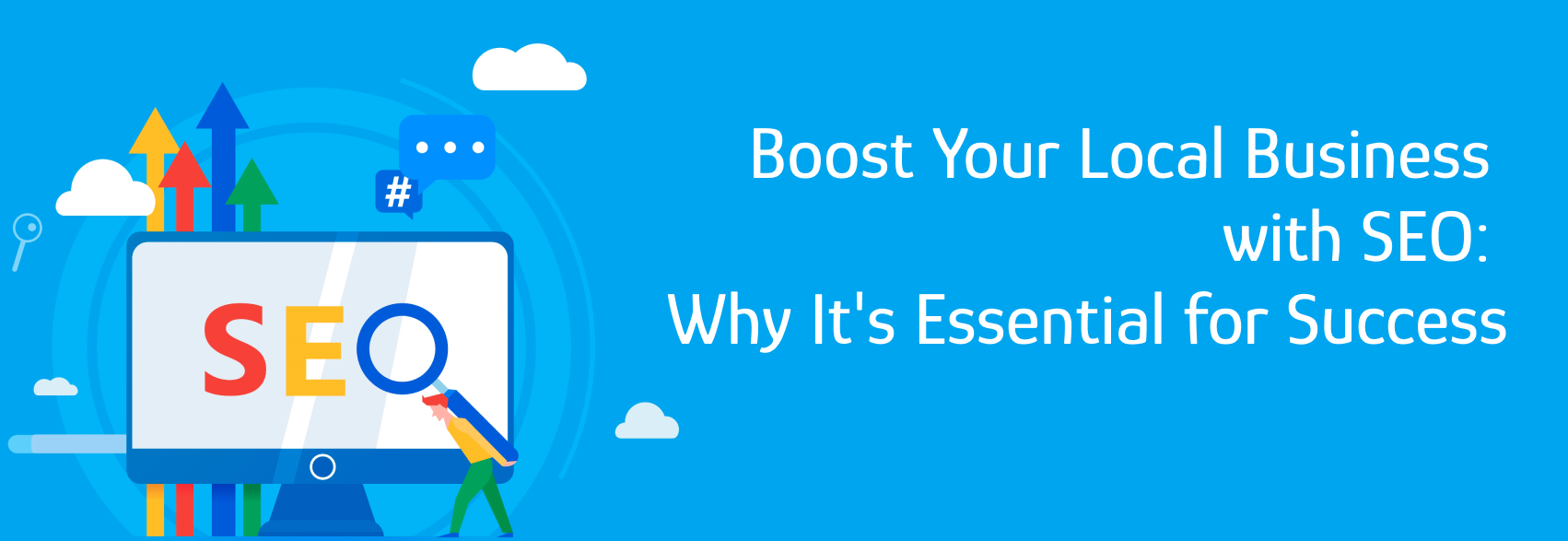
In 2024, the small business landscape is profoundly influenced by entrepreneurship and innovation. Technological advancements have driven businesses to adopt digital tools and platforms, enhancing their business strategy and fostering business growth. The rise of remote working trends and ecommerce has created new opportunities for startups, albeit with new challenges. Market research has become crucial as businesses strive to remain competitive in this rapidly evolving market.
The landscape is also characterized by an increased focus on sustainability and social responsibility. Small businesses are recognizing the importance of implementing sustainable practices and contributing positively to their communities. This shift is not only driven by regulatory pressures but also by changing consumer preferences, as discovered through thorough market research. Consumers are showing a preference for businesses that align with their values, thus impacting the business strategy of many small businesses.
Furthermore, the small business landscape in 2024 is more diverse, with an increase in businesses owned by women, minorities, and young entrepreneurs. This diversity is fostering innovation and contributing to the robustness of the small business sector. However, despite these positive trends, challenges such as access to capital, regulatory complexities, and competition from larger corporations persist.
For small businesses, understanding changing trends is crucial for business growth. These trends provide insight into the evolving needs and preferences of consumers, and businesses that fail to adapt risk losing relevance. By keeping a close eye on trends through market research, startups can identify opportunities for innovation and differentiation, thus shaping their business strategy.
Trends can also signal shifts in the competitive landscape. For instance, the rise of ecommerce has disrupted traditional retail, creating a new dynamic. Startups that were quick to adopt ecommerce gained a competitive edge, while those slow to adapt faced challenges. Therefore, observing trends can help businesses anticipate and respond to competitive threats, aiding in financial planning and business growth.
Moreover, observing trends can help small businesses make informed decisions about their operations and strategy. The trend towards remote working has implications for operational costs, talent acquisition strategies, and technology investments. By understanding these trends, businesses can make strategic decisions that enhance their competitiveness and profitability.
In 2024, a small business is defined not only by its size and revenue but also by its digital presence, sustainability practices, and social impact. The rise of digital marketing has made it crucial for businesses of all sizes to have an online presence. This includes not only having a website but also utilizing social media, ecommerce platforms, and digital marketing strategies.
A small business in 2024 is typically characterized by its agility and adaptability. These businesses, often startups, respond quickly to changes in the market, whether it be adopting new technologies, pivoting their business model, or responding to changing consumer preferences. This agility often gives small businesses a competitive edge over larger, more bureaucratic organizations.
Finally, small businesses in 2024 are defined by their commitment to sustainability and social responsibility. These businesses recognize the importance of their role in their communities and are committed to making a positive impact. This commitment is reflected in their business practices, from sourcing and supply chain management to marketing and customer service.
The landscape of entrepreneurship is changing dramatically, driven by innovation and a shift in business strategy. Small businesses are at the forefront of these changes, leveraging advanced technologies and new work environments to drive business growth. Market research indicates a significant shift towards digital marketing and ecommerce, as small businesses seek to compete more effectively in the marketplace and meet changing customer expectations.
Advanced technologies are becoming increasingly important for small businesses. From AI to cloud computing, these technologies are helping businesses streamline their operations, improve customer experiences, and drive growth. However, these technologies also present challenges, particularly in terms of regulation and compliance. Small businesses must navigate these challenges to effectively leverage these technologies and stay competitive.
Financial planning is also becoming more crucial for small businesses. As the business landscape becomes more complex and competitive, businesses need to plan effectively to ensure their financial stability and growth. This includes everything from budgeting and forecasting to risk management and investment planning. By doing so, businesses can ensure they have the resources they need to invest in new technologies and strategies, and drive their growth.
Artificial Intelligence (AI) is a key area of innovation for small businesses. AI is helping businesses streamline their operations, make more informed decisions, and provide more personalized customer experiences. As AI becomes more prevalent, we expect to see more small businesses adopting this technology and integrating it into their business strategy.
However, the adoption of AI also brings regulatory challenges. Governments around the world are implementing regulations to govern the use of AI, aiming to protect consumers, promote fair competition, and ensure ethical use of this technology. Small businesses need to stay abreast of these regulations and ensure their use of AI complies with all relevant laws and guidelines.
Despite these challenges, the potential benefits of AI for small businesses are immense. By adopting AI, businesses can improve their efficiency, enhance their competitiveness, and deliver better value to their customers. However, to fully realize these benefits, businesses need to invest in the necessary infrastructure, skills, and processes to effectively implement and manage AI.
The rise of remote and hybrid work environments is reshaping the entrepreneurship landscape. Driven by technological advancements, changing employee expectations, and the ongoing impacts of the COVID-19 pandemic, these new work environments are becoming the norm for many small businesses.
Remote and hybrid work environments offer many benefits for small businesses. They can help businesses attract and retain talent, improve productivity, and reduce overhead costs. However, they also present challenges, such as managing remote teams, maintaining company culture, and ensuring data security.
To successfully navigate these challenges, small businesses need to implement effective remote work policies and tools. They also need to invest in technologies that support remote work, such as cloud computing, collaboration tools, and cybersecurity solutions. By doing so, they can create a flexible and productive work environment that meets the needs of their employees and their business.
Entrepreneurship today is increasingly focusing on sustainability and employee development as core elements of business strategy. This is a shift from traditional models, with the modern business landscape recognizing the importance of sustainable practices in achieving business growth. Sustainability is no longer just a compliance issue, but a key differentiator in a competitive market, driving innovation in products and services.
Alongside sustainability, businesses are recognizing the value of employee development in their business strategy. Market research indicates a strong correlation between employee development and overall business growth. Investments in training programs, career development initiatives, and learning opportunities have shown to significantly enhance employee skills and capabilities, contributing to the overall financial planning of the organization.
The integration of sustainability and employee development in business strategies signifies a shift towards more holistic and future-oriented management practices. In the realm of entrepreneurship, companies that balance economic performance with social responsibility and employee growth are more likely to thrive.
The world of digital marketing is rapidly evolving with the advent of Augmented Reality (AR) and Virtual Reality (VR) technologies. These technologies offer businesses the opportunity to create more immersive experiences for their customers, driving innovation in customer engagement methods. In the ecommerce sector, AR/VR technologies are being used to provide customers with a unique, immersive shopping experience.
However, leveraging AR/VR technologies requires significant financial planning and investment. Companies need to conduct thorough market research to assess their objectives and resources before adopting these technologies. Despite the potential challenges, the use of AR/VR technologies in digital marketing strategies is expected to increase, given the potential for creating immersive experiences.
Emerging trends such as sustainability, employee development, and AR/VR technologies are having a significant impact on various industries. These trends are reshaping business strategies, operational practices, and supply chain management across sectors. Companies that proactively respond to these trends and adapt their strategies accordingly are likely to gain a competitive advantage.
In the startup ecosystem, these trends are driving innovation and creating opportunities for business growth. For instance, startups in the ecommerce sector are leveraging AR/VR technologies to enhance customer experiences and gain a competitive edge. Similarly, startups focusing on sustainability and employee development are attracting more investment and gaining market traction.
The impact of these trends varies across industries, depending on factors such as the industry's maturity, competitive dynamics, and regulatory environment. However, companies that proactively respond to these trends and adapt their strategies accordingly are likely to gain a competitive advantage.
Looking ahead, several industries are projected to boom in 2024, driven by technological advancements, changing consumer preferences, and evolving business trends. The technology industry, particularly sectors related to AR/VR, artificial intelligence, and cybersecurity, is expected to experience significant growth. The increasing digitization of businesses and the growing importance of data security are likely to fuel this growth.
The healthcare industry is also projected to boom, driven by advancements in medical technologies and the increasing demand for healthcare services due to the aging population. The renewable energy sector is another industry expected to experience significant growth, driven by the increasing focus on sustainability and the declining costs of renewable energy technologies.
Lastly, the ecommerce industry is expected to continue its growth trajectory, driven by the increasing internet penetration, changing consumer shopping habits, and advancements in logistics and delivery services. These projections, however, are subject to various factors, including economic conditions, regulatory changes, and technological developments.
Traditional industries face a dynamic set of challenges in today's rapidly evolving technological landscape. One of the most daunting challenges is the rapid pace of technological advancement. Traditional industries, rooted in conventional processes, often find it difficult to adapt to the swift changes brought about by technology. These industries are constantly under pressure to upgrade their systems, processes, and operations to remain competitive. This not only necessitates significant capital investment but also requires a strategic shift in business models which can be disruptive.
Moreover, the workforce within traditional industries often lacks the skill set required to work with advanced technologies. This necessitates extensive training and development programs, which adds to the operational expenses. Also, there is a risk of resistance from employees who are comfortable with established processes and reluctant to adapt to new technologies. Overcoming this resistance and fostering a culture of innovation and adaptability is a major challenge for these industries.
The shift in consumer behavior poses another challenge for traditional industries. Today's consumers are tech-savvy and demand a seamless and interactive digital experience. This necessitates traditional industries to invest heavily in digital transformation, which includes creating a robust online presence, developing e-commerce capabilities, and offering digital customer service. This can be a daunting task for industries that have been operating conventionally for years.
Additionally, the rise of e-commerce and digital platforms has intensified competition. Traditional industries not only compete with local businesses but also with global entities that offer similar products or services. This necessitates a strategic shift in marketing, pricing, and customer service, which can be challenging for industries accustomed to traditional business practices.
The year 2024 is projected to bring significant financial trends that will impact small businesses. The rise of digital payments is one such trend. As consumers increasingly prefer digital transactions over cash, small businesses must adapt by integrating digital payment systems. While this might entail initial investment in technology and security measures, it can lead to increased sales, customer convenience, and improved cash flow management.
Another trend that is poised to impact small businesses is the growing significance of financial technology, or fintech. Fintech solutions can automate financial processes, thereby enhancing efficiency, reducing errors, and cutting costs. However, the adoption of fintech necessitates a certain level of technological literacy and can be challenging for small businesses lacking the necessary resources or expertise.
The economic uncertainty resulting from global events, including the ongoing COVID-19 pandemic, is another trend that is expected to continue into 2024. This uncertainty can lead to market volatility, fluctuating exchange rates, and unpredictable business conditions. Small businesses must thus develop robust financial strategies to manage risks and ensure business continuity.
Inflation and changes in interest rates are other financial trends that could impact small businesses in 2024. Inflation can increase the cost of goods and services, thereby affecting profitability. Changes in interest rates can impact the cost of borrowing, which can affect small businesses that rely on loans for their operations.
In the world of business, particularly for small and medium-sized enterprises, securing funding is a critical aspect that can dictate the pace of growth and expansion. While traditional sources of capital like bank loans and personal savings are still prevalent, there are several alternative sources of capital that businesses can explore.
Crowdfunding is one such alternative source of capital. It involves raising funds from a large number of people, typically through an online platform. This method can be particularly useful for businesses with innovative products or services that can generate excitement among potential investors. However, successful crowdfunding requires a compelling business proposition, a well-crafted marketing strategy, and the ability to engage with a large audience. It can also be time-consuming and may not guarantee the required funding.
Venture capital is another alternative source of capital. Venture capitalists invest in startups and small businesses with high growth potential, in exchange for equity in the company. While venture capital can provide substantial funding, it often comes with strings attached. Venture capitalists typically seek a significant say in business decisions, which can lead to loss of control for the original business owners.
Peer-to-peer lending is a relatively new source of capital, where businesses can borrow money directly from individuals, bypassing traditional financial institutions. This method can provide quicker access to funds and may offer more flexible terms. However, interest rates can be higher, and businesses must have a solid repayment plan in place to avoid default.
Lastly, businesses can also consider angel investors as an alternative source of capital. Angel investors are individuals who provide capital for startups in exchange for ownership equity or convertible debt. They can also provide valuable mentorship and guidance. However, similar to venture capital, this method can lead to loss of control over business decisions.
In the realm of entrepreneurship, understanding the implications of rising interest rates and economic uncertainty is pivotal. Interest rates, a key aspect of financial planning, impact the cost of capital and the return on investment for businesses. As interest rates rise, the cost of borrowing for businesses increases, potentially leading to a slowdown in business growth. Conversely, lower interest rates can stimulate business growth by making borrowing cheaper and encouraging investment.
Economic uncertainty, often driven by factors beyond a business's control, can create a challenging environment for entrepreneurship. It can lead to market volatility, disrupt the supply chain, and impact consumer confidence. However, businesses that embrace innovation and employ robust business strategies can turn these challenges into opportunities.
In the face of rising interest rates and economic uncertainty, businesses must be proactive in their financial planning. This could involve diversifying their portfolio, hedging against potential risks, or exploring new markets to mitigate the impact of adverse economic conditions.
The digital revolution has transformed the way businesses operate, particularly in the realm of ecommerce. Advanced payment options have become a critical component of a successful ecommerce strategy. These include mobile wallets, contactless payments, and digital currencies, which offer a seamless and secure payment experience for customers.
For businesses, particularly startups, the integration of advanced payment options can streamline operations, reduce transaction costs, and enhance customer satisfaction. These options also provide valuable data, which can be used for market research and to refine business strategies.
However, the adoption of these advanced payment options comes with challenges. Businesses must navigate issues related to data security, regulatory compliance, and technological integration. They must also stay abreast of the latest trends in payment technology and be prepared to adapt to changing consumer preferences.
In the dynamic world of digital marketing, small businesses must leverage innovative strategies to stay competitive. As we look ahead to 2024, several key trends are expected to shape the marketing strategies of businesses, particularly in the realm of ecommerce.
Content marketing, a cornerstone of digital marketing, will continue to be a powerful tool for businesses. By creating and sharing valuable content, businesses can engage their audience, build brand loyalty, and drive traffic to their ecommerce platforms. The use of video content, in particular, is expected to rise, with platforms like YouTube and TikTok offering new avenues for customer engagement.
Local SEO will also be a crucial aspect of marketing strategies for small businesses. With the rise of voice search and mobile browsing, businesses must optimize their online presence to target local customers. This involves using location-based keywords, optimizing Google My Business listings, and collecting customer reviews.
Building an online community is a strategic imperative for businesses in the digital age. A strong online community fosters customer loyalty, enhances brand reputation, and drives business growth. It is particularly crucial for startups seeking to establish their brand and grow their customer base.
To grow an online community, businesses must first identify their target audience and understand their needs and preferences. This involves conducting market research, analyzing customer data, and monitoring social media trends.
Next, businesses must create engaging and relevant content to attract and retain community members. This could involve sharing blog posts, hosting webinars, or launching online contests. Businesses should also encourage community members to share their experiences and feedback, thereby fostering a sense of belonging and engagement.
Finally, businesses must invest in community management. This involves moderating discussions, addressing customer complaints, and promoting positive interactions within the community. By doing so, businesses can cultivate a positive online environment and build lasting relationships with their customers.
In the realm of entrepreneurship, personalizing customer service has emerged as a strategic business growth tool. Personalization involves understanding customer behaviors, preferences, and needs, which requires the integration of advanced analytics and customer relationship management systems. A personalized approach to customer service fosters a deep connection between the business and its customers, enhancing customer loyalty and leading to repeat purchases and referrals, thus driving business growth.
Personalization, however, requires a careful balance. Businesses must ensure they use customer data responsibly, adhering to data protection laws and regulations, to avoid any perceived invasion of privacy. Transparency about how customer data is used can help businesses build trust with their customers, a key aspect of a successful business strategy.
The implementation of personalized customer service requires a shift in business culture. It calls for a customer-centric approach where all business operations are aligned towards meeting individual customer needs. Employee training, advanced analytics, and customer relationship management systems are critical components of this shift.
Social media has revolutionized digital marketing. It provides a platform for businesses to reach a global audience, engage with customers, and build brand awareness. To maximize the benefits of social media marketing, businesses need to develop a clear strategy, understand their audience, and effectively utilize different social media platforms, elements that are integral to a comprehensive digital marketing strategy.
Understanding the target audience is the first step in developing a successful social media marketing strategy. Market research or social media analytics tools can provide valuable insights into audience behavior and preferences. This understanding allows businesses to create content that resonates with their audience and choose the appropriate platform for content delivery.
Engagement is a critical aspect of social media marketing. It's not enough to just post content; businesses need to interact with their audience. Regular interaction boosts the visibility of the content, as most social media algorithms favor content with high engagement. This engagement helps build a strong relationship with the audience, a key aspect of successful digital marketing.
The future presents both opportunities and challenges for small businesses. Technological advancements and changing consumer behavior offer numerous opportunities for growth and expansion. However, these same factors also pose significant challenges. One of the major opportunities lies in the rise of ecommerce. The proliferation of online shopping platforms has made it easier for small businesses to reach a global audience and sell their products or services without the need for a physical store.
However, the rise of ecommerce also presents significant challenges. Small businesses now have to compete with large multinational corporations that have vast resources at their disposal. These corporations can offer lower prices, faster delivery times, and a wider range of products, making it difficult for small businesses to compete.
Access to capital is another major challenge for small businesses. While there are numerous financing options available, many small businesses struggle to secure the necessary funds due to stringent lending criteria, high interest rates, and a lack of collateral. This can hinder their ability to invest in new technologies, hire skilled employees, or expand their operations.
As we look to the future, there are several concerns that businesses need to address to ensure their survival and growth. The rapid pace of technological advancements is one of the major concerns. Businesses need to stay abreast of the latest technologies and integrate them into their operations to stay competitive. However, this requires significant investment in technology and skills training, which can be a challenge for many businesses.
Changing consumer behavior is another major concern. The rise of ecommerce and digital platforms has made consumers more demanding. They expect seamless and personalized experiences, and businesses that fail to meet these expectations risk losing their customers to competitors. Therefore, businesses need to invest in customer experience and personalization to meet the changing consumer demands.
Regulatory changes and economic uncertainty are other major concerns for businesses. With increasing regulatory scrutiny and changing economic conditions, businesses need to be agile and resilient to navigate these challenges. They need to stay updated on the latest regulations and economic trends and adjust their strategies accordingly.
Environmental sustainability is also a major concern for businesses. With increasing awareness about climate change and environmental degradation, businesses are under pressure to adopt sustainable practices. However, transitioning to sustainable practices requires significant investment and can be a challenge for many businesses.
Entrepreneurship today is defined by the ability to identify and seize opportunities. For small businesses, these opportunities often lie in the realm of digital marketing and ecommerce. The digital revolution has democratized the business landscape, allowing small businesses to compete with larger corporations. By using digital marketing strategies and ecommerce platforms, small businesses can connect with a global audience, thus driving business growth.
Innovation is another area where small businesses have ample opportunities to thrive. Small businesses, often characterized by their agility and flexibility, can innovate rapidly to meet changing market demands. This ability to innovate can lead to the development of unique products or services, setting these small businesses apart from their larger competitors.
Strategic partnerships and alliances also present opportunities for small businesses. By collaborating with other businesses, small businesses can pool resources, share risks, and leverage collective expertise. This business strategy can lead to new business opportunities, such as joint ventures or collaborative projects.
Emerging trends often signal new business opportunities. For small businesses, keeping abreast of these trends is crucial for success. One such trend is the increasing demand for sustainable and ethical products and services. By aligning their business strategy with sustainability and ethics, small businesses can attract a new demographic of conscious consumers.
Market research is another emerging trend that small businesses can leverage. By conducting thorough market research, small businesses can gain insights into customer behavior, market dynamics, and competitive landscape. These insights can inform business strategy, product development, and marketing campaigns.
Artificial intelligence and machine learning are also emerging trends that small businesses can leverage. These technologies can help small businesses automate tasks, analyze data, and improve customer service. By adopting these technologies, small businesses can increase their efficiency and competitiveness.
The future of small business lies in adaptability. In the face of rapid technological advancements and changing consumer behavior, small businesses must be willing to adapt and evolve. This means embracing digital transformation, prioritizing customer experience, and staying abreast of emerging trends.
Financial planning is another critical aspect of adapting to the future of small business. By developing robust financial plans, small businesses can ensure their financial sustainability and invest in growth opportunities.
Supply chain management is another area where small businesses need to adapt. With globalization and digitalization, supply chains have become more complex. Small businesses need to manage their supply chains effectively to ensure operational efficiency and customer satisfaction.
In conclusion, there are numerous opportunities for small businesses to thrive in the current business landscape. These include leveraging digital marketing and ecommerce, innovating to meet market demands, and forming strategic partnerships. By using emerging trends such as sustainability, market research, and artificial intelligence, small businesses can drive their success. However, the key to the future of small business lies in adaptability. This includes embracing digital transformation, robust financial planning, and effective supply chain management.
In the vast landscape of entrepreneurship, the role of digital marketing and specifically, search engine optimization (SEO), has become a linchpin for business growth. SEO is a dynamic field that requires a strategic approach, a comprehensive understanding of search engine algorithms, and a focus on quality content. In the context of business strategy, the importance of SEO is paramount. It is the key to improving visibility, driving traffic, and ensuring the longevity of a startup in the online marketplace.
Businesses should prioritize creating high-quality, relevant content that resonates with their target audience. This content should be regularly updated and optimized with the right keywords to improve its visibility in search engine results. The innovation in content creation, combined with market research to identify the right keywords, can significantly enhance the effectiveness of SEO strategies for ecommerce businesses.
Mobile optimization is another critical aspect of a successful business strategy. With the surge in mobile users worldwide, ensuring a mobile-friendly website has become a necessity for ecommerce startups. A mobile-optimized website not only enhances the user experience but also significantly improves search engine rankings. The key elements of mobile optimization include responsive web design, faster loading times, and easy navigation. By implementing these elements, businesses can provide a seamless browsing experience to their users, leading to higher user engagement, improved brand reputation, and increased conversion rates.
The use of advanced tools and technologies for tracking SEO performance is also a critical component of the business strategy. These tools can provide invaluable insights into the effectiveness of SEO strategies, helping businesses understand what works and what doesn't. By leveraging these insights, businesses can make data-driven decisions, refine their strategies, and achieve better results. Staying updated with the latest SEO trends and algorithm updates is equally important. Search engines continually evolve their algorithms, and businesses must adapt their strategies accordingly to maintain their search engine rankings.
In conclusion, SEO is a long-term commitment that requires continuous effort, patience, and dedication. It is not a one-time task but an ongoing process that involves regular monitoring, testing, and tweaking of strategies. Therefore, businesses should be prepared to invest time and resources into their SEO efforts. If needed, they can also seek professional SEO services to ensure that their strategies are effective and yield the desired results. With the right approach and commitment, businesses can significantly improve their online presence, attract more customers, and achieve sustainable growth.
Even more blog post

Shopping small is one of the best ways to show your support for your local community! Supporting loc...

Introduction If you're in business, you probably know that Google is the most important search engi...

Introduction A small business owner has to be careful about the money that comes in and goes out, o...

The distribution of hospitals in the USA by location is a critical aspect of the healthcare system....